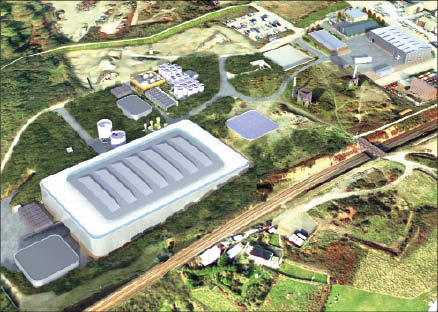A lot can change in a year. For Celeste Copper (C-V), a former copper-gold explorer struggling to advance optioned properties in Chile, it has meant new management, new deep-pocketed investors, a new jurisdiction and a new target: tin.
At nearly US$23,500 a tonne on the London Metal Exchange as of Feb. 27, tin boasts robust profit margins and healthy industrial demand, albeit with a somewhat lower level of investor interest than its base-metal cousins copper (US$8,400 per tonne), nickel (US$19,800 a tonne) and aluminum (US$2,265 a tonne).
The silvery, malleable metal is mainly used for soldering components in electronic equipment owing to its high resistance to corrosion, and also forms part of alloys such as bronze and pewter.
Though comparatively small at 350,000 tonnes, global annual demand for tin has outstripped supply for six of the past seven years, and the price of tin has shot from US$4,000 a tonne in 2002 to an all-time high of US$33,000 in early 2011. Tin prices slid 30% in the latter half of 2011 alongside other base metals but have since clawed back some of the losses in the first two months of 2012.
Analysts at Barclays Capital suggest another minor consolidation might be in order over the next few months as a result of softer Chinese import levels, however they argue the case for tin remains “broadly bullish” for 2012. UK-based consultancy Itri also forecasts a significant tin-price recovery in 2012’s second half. It says the market for tin is heavily dependent on exports from Indonesia, Peru and Bolivia, where suppliers have struggled to keep up production in recent years amid declining grades, export bans and other issues.
Celeste Copper’s transformation into a tin explorer began in May 2011, when it optioned full interest in England-based Cornish Minerals, which indirectly owns the historic South Crofty mine in mining-friendly Cornwall. South Crofty is an amalgamation of 12 mines that were historically mined for tin, copper and other metals until their closure in 1998. According to Celeste’s National Instrument 43-101 report for the project, “mining at South Crofty commenced as a small sett called Penhellick Vean in the 1590s,” and eventually grew to “become a huge underground mine spanning nearly 4.5 km across” and up to 3,000 feet deep. Mining in Cornwall itself dates back some 4,000 years.
The terms of Celeste’s option agreement are complicated and fairly steep, with the company required to spend at least £4.67 million, or $7.4 million, on exploration and development by May 31, 2012, for an initial 25% interest. It must spend another £9.33 million to bring its interest up to 50%, or £16.33 million for 60%, by Sept. 30, 2012. Lastly, should Celeste have acquired the 60% interest, it can negotiate to buy out the principals of Cornish Minerals for “an agreed-upon valuation” of the South Crofty mine project for the remaining 40%.
Celeste says previous operators left substantial tin and copper resources in the ground with low metal prices eventually making the mine uneconomic. South Crofty’s in-situ inferred resources as of May 2011 have been modelled as five near-surface deposit areas forming single and multiple narrow, polymetallic lodes. Named the Dolcoath deposit, total inferred resources using a 0.3% tin-equivalent economic cut-off are estimated at 1.3 million tonnes grading 0.44% tin, 1.08% copper and 0.66% zinc. Lode mineralization occurs within the meta-sediments and granite lithologies.
A National Instrument 43-101 technical report for the project assumes the total cost of mining and processing at South Crofty would be around US$50 a tonne using a simple gravity and flotation circuit, resulting in the break-even cut-off grade of 0.3% tin-equivalent. Celeste notes the project has much of the necessary mine infrastructure in place, including surface rights and access to railways, and is already fully permitted.
Shortly after optioning its new flagship project, Celeste brought in experienced base metals miner Norman Brewster as president and chief executive officer. It also appointed the well-connected Farhad Abasov as chairman. Abasov is an executive at Stan Bharti’s Forbes & Manhattan resource group, where he serves as president and CEO of Allana Potash (AAA-T, AAA-V) and as executive chairman of Rodinia Lithium (RM-V).
Late last year the pair helped drum up support for a 55.6-million-share, $10-million financing at 18¢ a unit, of which the company has so far closed an initial $6.08-million tranche. Boston-based Liberty Metals & Mining, part of the Liberty Mutual group of funds, acquired 22.2 million of the units for $4 million.
Celeste has also submitted 560 samples from 23 drill holes at South Crofty totalling 5,590 metres of diamond core drilling in the Dolcoath deposit areas. It expects assay results in the next few weeks.
Drilling earlier in 2011 encountered 13 metres grading 0.62% tin and 4.66% copper at Dolcoath, representing a 2.59% tin-equivalent grade. Several holes intersected multiple mineralized structures carrying tin and base metals in extensions to the Dolcoath South zone, which is a polymetallic sheeted-vein set.
Celeste has 95.3 million shares outstanding, 129.8 million if fully diluted and $250,000 in cash-on-hand. At presstime on Feb. 28, Celeste traded for 14.5¢, within a 52-week trading range of 6¢ to 22¢.


Be the first to comment on "Celeste looks to resurrect tin mining in Cornwall"